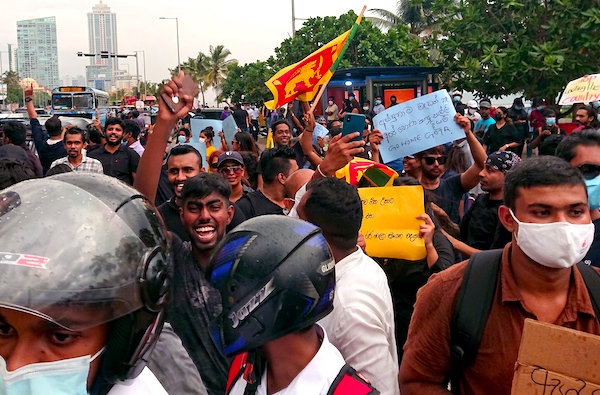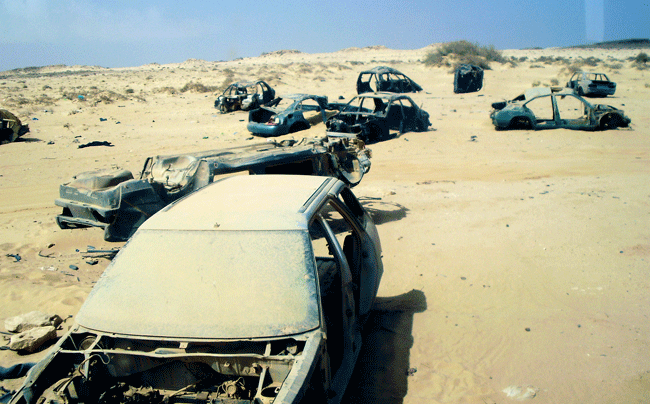By Uditha Devapriya
On May 18, the grace period for a USD 78 million coupon payment expired in Sri Lanka. For the first time in its post-independence history, the island nation defaulted on its foreign debt. The Governor of the Central Bank, Dr Nandalal Weerasinghe, then announced that it would take six months for it to start repaying its creditors. An agreement with the International Monetary Fund (IMF) is in the pipeline now, but such an agreement will take another month or two.
From a global perspective, there seems nothing unique about Sri Lanka’s crisis. For the country’s 22 million plus population, however, its scale has been unprecedented. While horror stories of Sri Lanka turning into another Lebanon or Zimbabwe have been recycled relentlessly in the press since 2020, in recent months such comparisons have been made more frequently. Inflation, which began peaking last year, hit 30 percent in April and 40 percent in May. While nowhere near Lebanon or Zimbabwe, according to certain estimates these figures put Sri Lanka at the top of global inflation indices.
All this has given rise to certain perceptions about the country’s problems. Western and Indian media, in particular, ascribe the crisis to domestic politics. Very few commentators have noted that these problems have been years if not decades in the making, that the government’s ineptitude is more a symptom than a cause, and that external factors have had a say in these problems. The president’s bungling has contributed to these problems, to be sure, but that only shows how complex those problems are.
Elephants in the room
Just how complex, though? To answer that, it is necessary to address the structural causes that international media and political analysts note as having led to the crisis. These groups underline four factors: the government’s indulgence of unorthodox economic theories, its drive towards organic agriculture, its refusal to go to the IMF, and its insistence on diverting foreign reserves to defending the currency and repaying bondholders.
It must be noted that all these problems are very much linked to the structural weaknesses of the economy. While there is a consensus on those weaknesses, however, economists are divided over what, or who, is to blame for them.
Sri Lanka’s economy has typically been paraded as “export-dependent.” Yet it has been running trade deficits for much of the last 50 years. Its exports include primary commodities like tea, textiles, as well as tourism. It also earns remittances from migrant workers, many of whom work menial jobs in West Asia and effectively subsidise oil-rich economies. These sectors took a hit from the COVID-19 pandemic. While tourism was on its way up in January and February, most arrivals were from countries like Russia and Ukraine. Russia’s invasion of Ukraine thus, effectively, dealt a blow to hopes of a long-term revival.
Neoliberal economists, especially those linked to Colombo’s economic policy think-tanks, diagnose Sri Lanka’s crisis as one of excessive money printing and government spending. They see the country’s public sector as bloated and politicised.
Neoliberal economists, especially those linked to Colombo’s economic policy think-tanks, diagnose Sri Lanka’s crisis as one of excessive money printing and government spending. They see the country’s public sector as bloated and politicised.
To an extent, the latter view is correct. Sri Lanka’s bureaucracy has long been the preferred destination for unemployed graduates and the politically connected. While Gotabaya Rajapaksa came to power implying he would end such a culture, he reversed course two years later and hired 65,000 graduates to the state sector. Ironically, it is the peers of these graduates who are occupying the frontlines of anti-government protests today.
The heterodox view: Industrialise or perish!
Heterodox economists see things differently. According to them, Sri Lanka’s problems have had to do with its failure to industrialise and shift to manufacturing.
One of Gotabaya Rajapaksa’s first decisions was to appoint W. D. Lakshman as Governor of the Central Bank. Economic analyst Shiran Illanperuma describes Lakshman’s appointment as having been “poorly received by comprador capitalists and economists.” However, to be fair, it was also openly welcomed by a section of that crowd. Only when he began enacting policies aimed ostensibly at stimulating growth and industrialisation, including a series of tax cuts which have now been reversed, did they start to voice opposition.
One of the most prominent advocates of industrialisation in Sri Lanka is Howard Nicholas. A Senior Lecturer in Economics at the International Institute of Social Studies (ISS) at the Erasmus University of Rotterdam, the Netherlands, Dr Nicholas helped set up the Institute of Policy Studies (IPS), a think-tank that once advocated industrialisation, in the 1980s.
According to Dr Nicholas, Sri Lanka’s prospects were bright in the 1990s. It even had the potential to surpass Vietnam. Yet with the assassination of the then president and the election in 1994 of a regime that modelled itself on Clintonian Third Way Centrist lines, industrialisation was abandoned in favour of privatisation and deregulation.
The new strategy filled the government coffers – for a while. But with the escalation of the civil war and, paradoxically, the elevation of the country to middle-income status in the 2000s, Sri Lanka found it hard to access traditional aid programmes. It was at that juncture that it started moving into international bond markets.
According to Harvard University’s Atlas of Economic Complexity, Sri Lanka’s largest exports are in “moderate and low complexity products”, like textiles. This contrasts with Vietnam, where textiles are more highly complex. Sri Lanka is also seeing “a static pattern of export growth.” In other words, while in 1990 it could boast of much potential in garments, by the early 2000s the sector’s prospects had considerably reduced.
To bring about a shift to industrialisation, heterodox economists thus contend that the government must oversee a strategy centring on import substitution: a dreary and dismal prospect for Colombo’s English-speaking, neoliberal coterie.
The failures of governance and the road ahead
To be fair, however, accurate as their diagnosis may be, advocates of industrialisation did not consider whether the Rajapaksa government would pay attention to their strategies. Unfortunately for them, the government has neither responded to nor fully appreciated the importance of those strategies. A combination of corruption, ineptitude, and an eagerness to compromise has thus put industrialisation on the backburner.
The National Milk Board is a case in point. A loss-making institution for a long period, the Milk Board recorded profits last year. Yet a year or so after this milestone in the country’s public sector, the government replaced its chairman with a man named as one of the main suspects of the assault on anti-government protesters on May 9. Such actions, multiplied several times over, have only distanced capable individuals from the State.
At one level, these developments fit in with South Asia’s legacy of dynastic politics. From India to Bangladesh, the subcontinent is hardly a stranger to family rule. However, at the same time, the Rajapaksas have gone well beyond this regional model.
As Sri Lanka’s leading political analyst Dr Dayan Jayatilleka has remarked, “[t]his is not the Asian phenomenon of familial succession in politics, which is serial and sequential. The contemporary Sri Lankan phenomenon and process is both sequential and simultaneous, vertical and horizontal.” In other words, while family rule in the rest of Asia has served to sustain the political system, in Sri Lanka it has led to its very dismantlement.
In any case, what protesters consider as the Rajapaksa government’s failures have been symptoms, rather than causes, of the structural weaknesses threatening to tear apart the economy. The government must share much of the blame for this: in particular, the Rajapaksas’ tendency to surround themselves with yes-men.
Yet beyond this narrative, there is a far more compelling problem: a failure to resolve pressing issues like the island’s dependence on imports and sovereign debt. While not all protesters are oblivious to these concerns, many of them are yet to address them fully. So long as debates over the crisis and its wider ramifications remain dominated by narratives of corruption, such issues will go unnoticed and unresolved.
(Uditha Devapriya is an international relations analyst, researcher, and columnist based in Sri Lanka. He is presently pursuing a Postgraduate Diploma in International Relations at the Bandaranaike Centre for International Studies in Colombo. He can be reached at udakdev1 [at] gmail.com)












